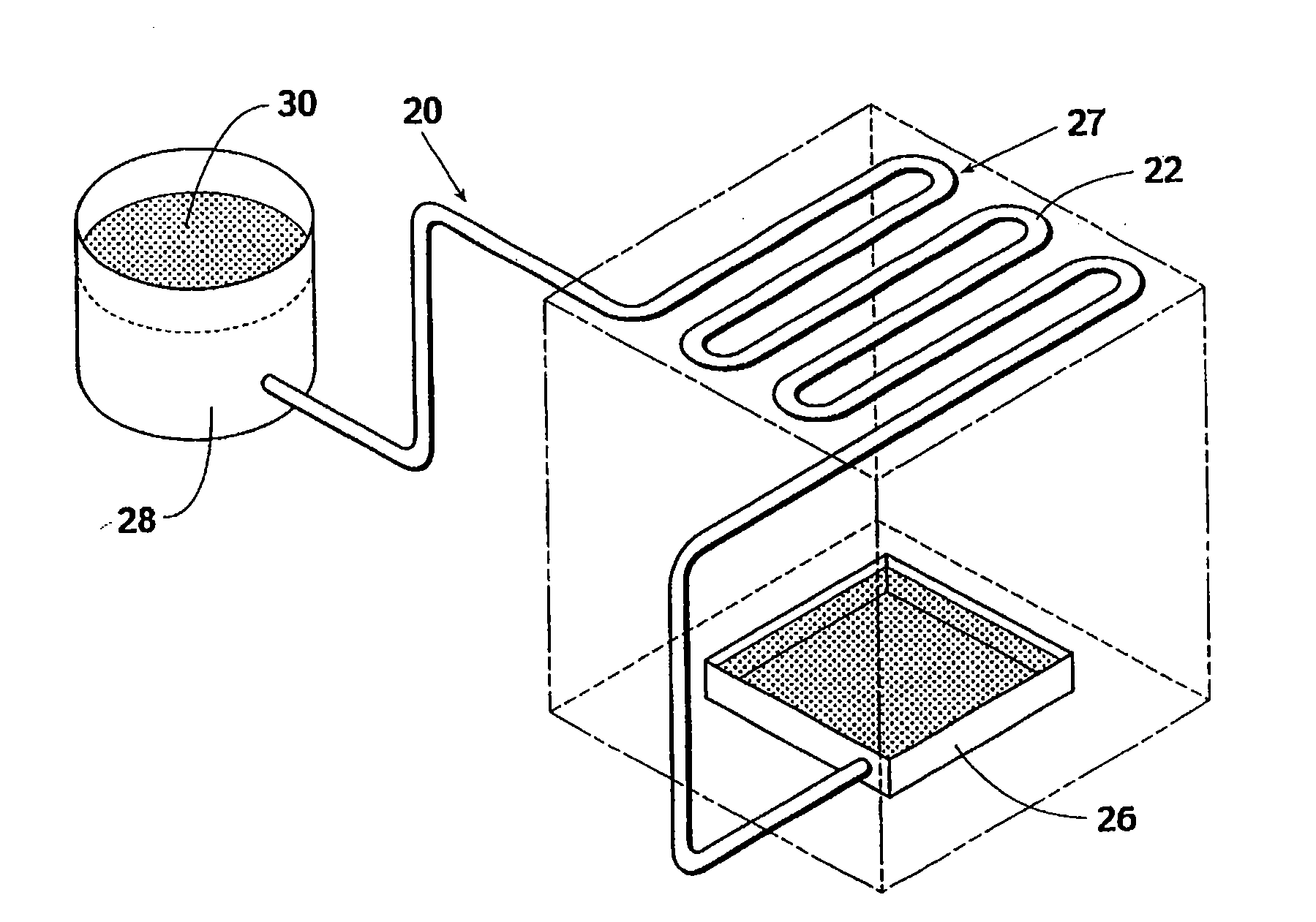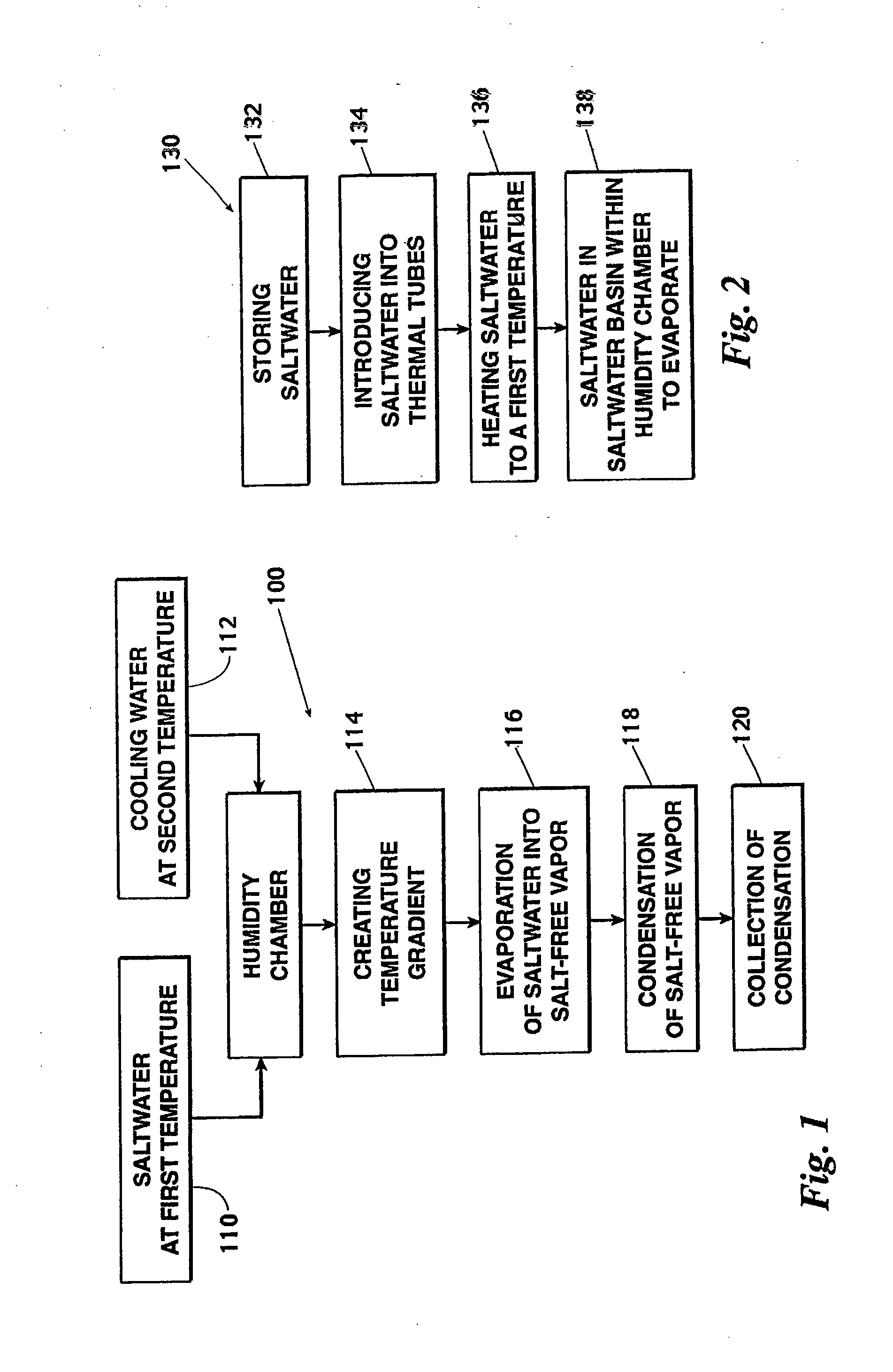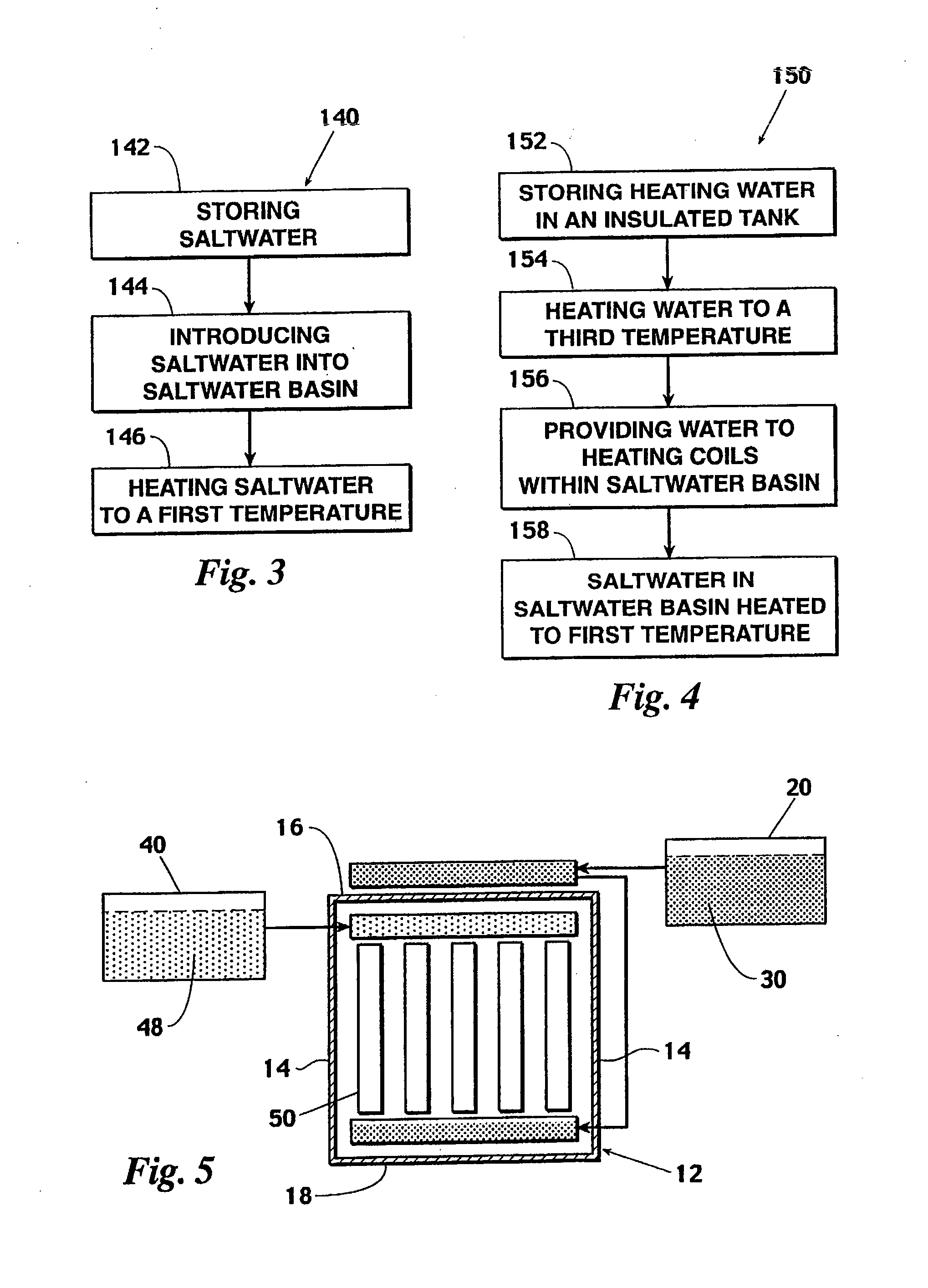Apparatus for desalinization utilizingtemperature gradient/condensation and method thereof
a technology of desalinization apparatus and temperature gradient, which is applied in the direction of vacuum distillation separation, vessel construction, separation process, etc., can solve the problems of large scale desalinization, low efficiency, and inability to disclose the use of lowering pressure to allow for easy evaporation of saltwater, etc., and achieve high efficiency
- Summary
- Abstract
- Description
- Claims
- Application Information
AI Technical Summary
Benefits of technology
Problems solved by technology
Method used
Image
Examples
embodiment 150
[0039]FIG. 4 illustrates a schematic of an embodiment 150 to heat saltwater located within the saltwater basin. As illustrated in steps 152 and 154, water is heated by a flat plate solar collector and stored in an insulated tank or obtained from a salinity gradient solar pond. The heated water is then released in to heating coils located within the saltwater basin residing in the humidity chamber, as illustrated in steps 156. The saltwater located within the saltwater basin is then heated via the heated water to an acceptable temperature for evaporation as illustrated in steps 158. While the close loop heating process is illustrated as being used independently, those skilled in the art will recognize that this process can be used in combination with other heating processes, such as the thermal tube heating process.
embodiment 10
[0040]As shown in FIG. 5, an embodiment 10 of the apparatus comprises a humidity chamber 12, a saltwater container 20, a cooling water container 40 and a salt-free water collecting container 50. Saltwater container 20 provides saltwater 30 having a first temperature into humidity chamber 12. Cooling water container 40 provides cooling water 48 having a second temperature, which is relatively cooler than the temperature of the saltwater, into humidity chamber 12. The temperature difference between saltwater 30 and cold water 48 creates a temperature gradient which establishes suitable atmospheric conditions for the evaporation of the saltwater. During this evaporation process, salt-free water evaporates into water vapor while the salt and salt-related constituent compounds do not. The salt-free water vapor then condenses on salt-free water condensing and collection container 50. The salt-free water condensation is then collected for later use.
[0041]Humidity chamber 12 is shown in a g...
PUM
| Property | Measurement | Unit |
|---|---|---|
| Temperature | aaaaa | aaaaa |
| Temperature | aaaaa | aaaaa |
| Temperature | aaaaa | aaaaa |
Abstract
Description
Claims
Application Information
 Login to View More
Login to View More - R&D
- Intellectual Property
- Life Sciences
- Materials
- Tech Scout
- Unparalleled Data Quality
- Higher Quality Content
- 60% Fewer Hallucinations
Browse by: Latest US Patents, China's latest patents, Technical Efficacy Thesaurus, Application Domain, Technology Topic, Popular Technical Reports.
© 2025 PatSnap. All rights reserved.Legal|Privacy policy|Modern Slavery Act Transparency Statement|Sitemap|About US| Contact US: help@patsnap.com



